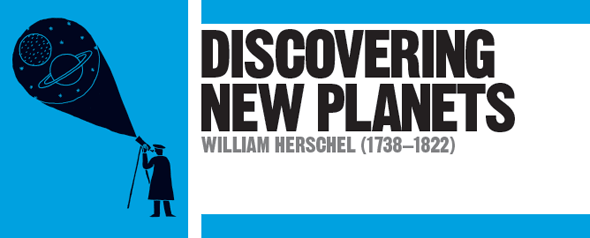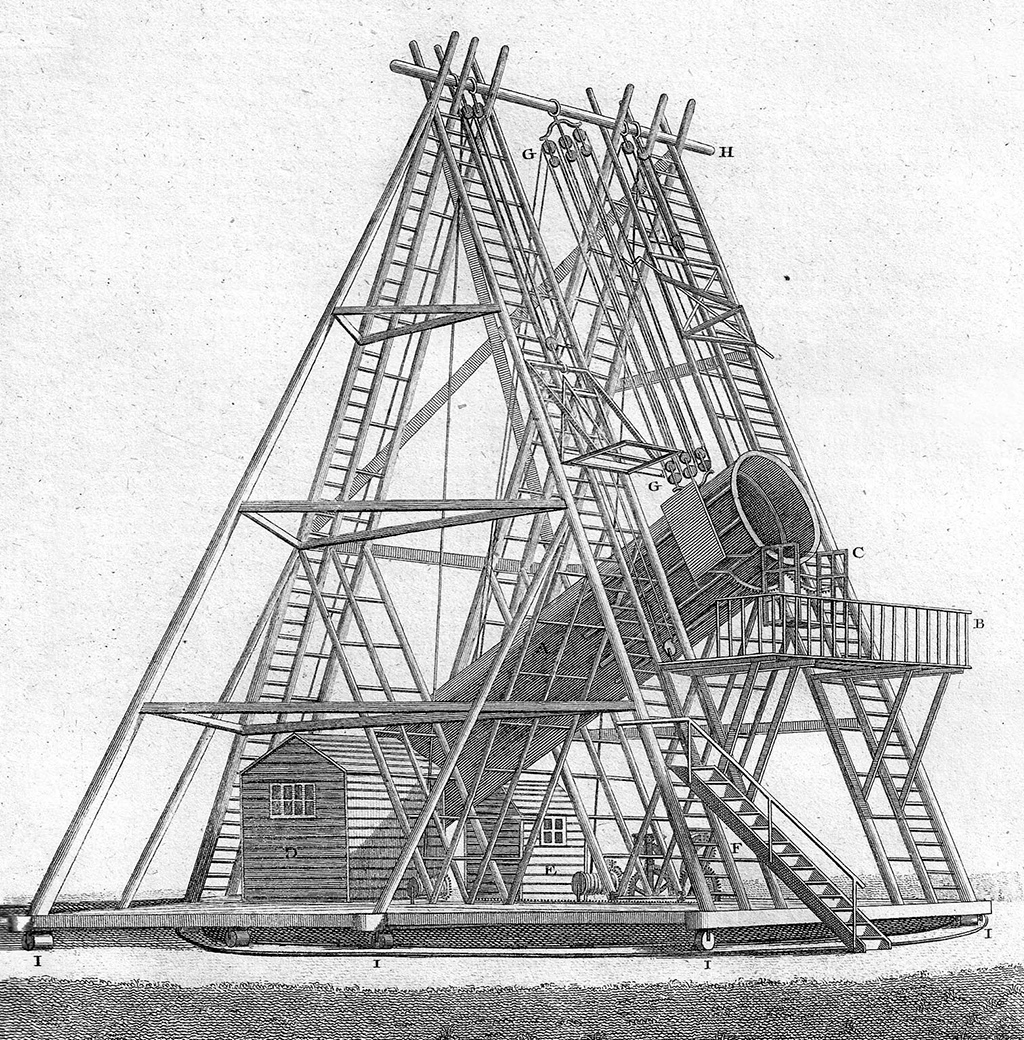
IN CONTEXT
Astronomy
Early 1600s The lens-based refracting telescope is invented, but mirror-based telescopes are not developed until the 1660s, by Isaac Newton and others.
1774 French observer Charles Messier publishes his astronomical survey, inspiring Herschel to begin work on a survey of his own.
1846 Unexplained changes to the orbit of Uranus lead French mathematician Urbain Le Verrier to predict the existence and position of an eighth planet – Neptune.
1930 US astronomer Clyde Tombaugh discovers Pluto, which is initially recognized as a ninth planet, but now seen as the brightest member of the Kuiper Belt of small icy worlds.
In 1781, German scientist William Herschel identified the first new planet to be seen since ancient times, although Herschel himself initially thought it was a comet. His discovery would also lead to the discovery of another planet as a result of predictions based on Newton’s laws.
By the late 18th century, astronomical instruments had advanced significantly – not least through the construction of reflecting telescopes that used mirrors rather than lenses to gather light, avoiding many of the problems associated with lenses at the time. This was the age of the first great astronomical surveys, as astronomers scoured the sky and identified a wide variety of “non-stellar” objects – star clusters and nebulae that looked like amorphous clouds of gas or dense balls of light.
Assisted by his sister Caroline, Herschel systematically quartered the sky, recording curiosities such as the unexpectedly large number of double and multiple stars. He even attempted to compile a map of the Milky Way galaxy based on the number of stars he counted in different directions.
On 13 March 1781, Herschel was scanning the constellation Gemini when he spotted a faint green disc that he suspected might be a comet. He returned to it a few nights later, and found that it had moved, confirming that it was not a star. On looking at Herschel’s discovery, Nevil Maskelyne realized that the new object was moving far too slowly to be a comet, and might in fact be a planet in a distant orbit. Swedish-Russian Anders Johan Lexell and German Johann Elert Bode independently computed the orbit for Herschel’s discovery, confirming that it was indeed a planet, roughly twice as far away as Saturn. Bode suggested naming it after Saturn’s mythological father, the ancient Greek sky god Uranus.

Irregular orbit
In 1821, French astronomer Alexis Bouvard published a detailed table describing the orbit of Uranus as it should be according to Newton’s laws. However, his observations of the planet soon showed substantial discrepancies with his table’s predictions. The irregularities of its orbit suggested a gravitational pull from an eighth, more distant planet.
By 1845, two astronomers – Frenchman Urbaine Le Verrier and Briton John Couch Adams – were independently using Bouvard’s data to calculate where in the sky to look for the eighth planet. Telescopes were trained on the predicted area, and on 23 September 1846, Neptune was discovered within just one degree of where Le Verrier had predicted it would be. Its existence confirmed Bouvard’s theory and provided powerful evidence of the universality of Newton’s laws.

In the 1780s, Herschel built his “40-foot” telescope with a 1.2m (47in) wide primary mirror and a 12m (40ft) focal length. It remained the largest telescope in the world for 50 years.
"I looked for the Comet or Nebulous Star and found that it is a Comet, for it has changed its place."
William Herschel
WILLIAM HERSCHEL

Born in Hanover, Germany, Frederick William Herschel emigrated to Britain at the age of 19 to make a career in music. His studies of harmonics and mathematics led to an interest in optics and astronomy, and he set out to make his own telescopes.
Following his discovery of Uranus, Herschel discovered two new moons of Saturn and the largest two moons of Uranus. He also proved that the Solar System is in motion relative to the rest of the galaxy. While studying the Sun in 1800, Herschel discovered a new form of radiation. He performed an experiment using a prism and a thermometer to measure the temperatures of different colours of sunlight, and found that the temperature continued to rise in the region beyond visible red light. He concluded that the Sun emitted an invisible form of light, which he termed “calorific rays” and which today we call infrared.
Key works
1781 Account of a Comet
1786 Catalogue of 1,000 New Nebulae and Clusters of Stars
See also: Ole Rømer • Isaac Newton • Nevil Maskelyne • Geoffrey Marcy